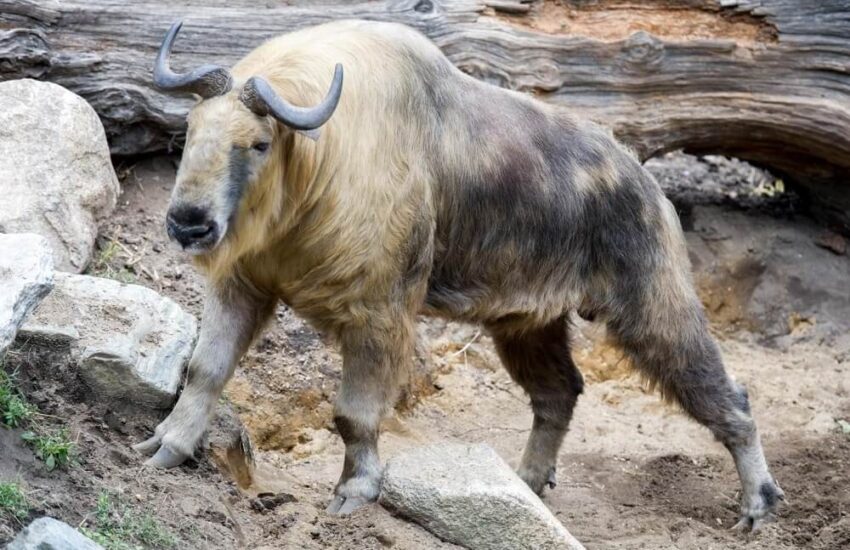Takin is the national animal of Bhutan, adding a specialty to the country’s many unique features.
Takin (Budorcas Taxicolor) holds massive significance in Bhutanese religious history and folklore.
The Takin is regarded as one of Bhutan’s national emblems by Bhutanese because of its distinctive and unusual traits that resemble a charming cross between a cow and a goat.
This is one of the many reasons why well-seasoned travel agents like Norbu Bhutan include a trip to see the national animal of Bhutan.
Apart from its uncanny appearance, the Takin is associated with one of the Tibetan saints who had a cathartic impression on the Bhutanese people.
This blog includes:
- The Origin of the Legendary Creature-Takin
- What Does a Takin Look Like?
- The First Man to Document the National Animal of Bhutan
- How Did Takin Become Known to the Rest of the World?
- What are the Subspecies of Takin?
- Ecology and Behavior of the National Animal of Bhutan
- How Rare is the National Animal of Bhutan?
- Where Can You Spot the National Animal of Bhutan?
- Final Thoughts
The Origin of the Legendary Creature-Takin

Takin, the national animal of Bhutan, holds great religious significance for the Bhutanese people as its thrilling origin tale began in the 15th century when people believed in religious miracles.
According to legend, when Lam Drukpa Kunley, also known as The Divine Madman, arrived in Bhutan from Tibet (in the 15th century), he presented religious teachings to the locals, who then asked him to perform a miracle. He agreed on the condition that they give him an entire cow and a whole goat for lunch.
The Divine Madman feasted on the meat of both animals and left the bones. He then attached the goat’s head to the cow’s body as he whispered mantras before snapping his fingers.
The animal immediately came to life and began grazing on the meadows. The Tibetan saint named the animal “Dong Gym They” – Takin.
What Does the National Animal of Bhutan Look Like?
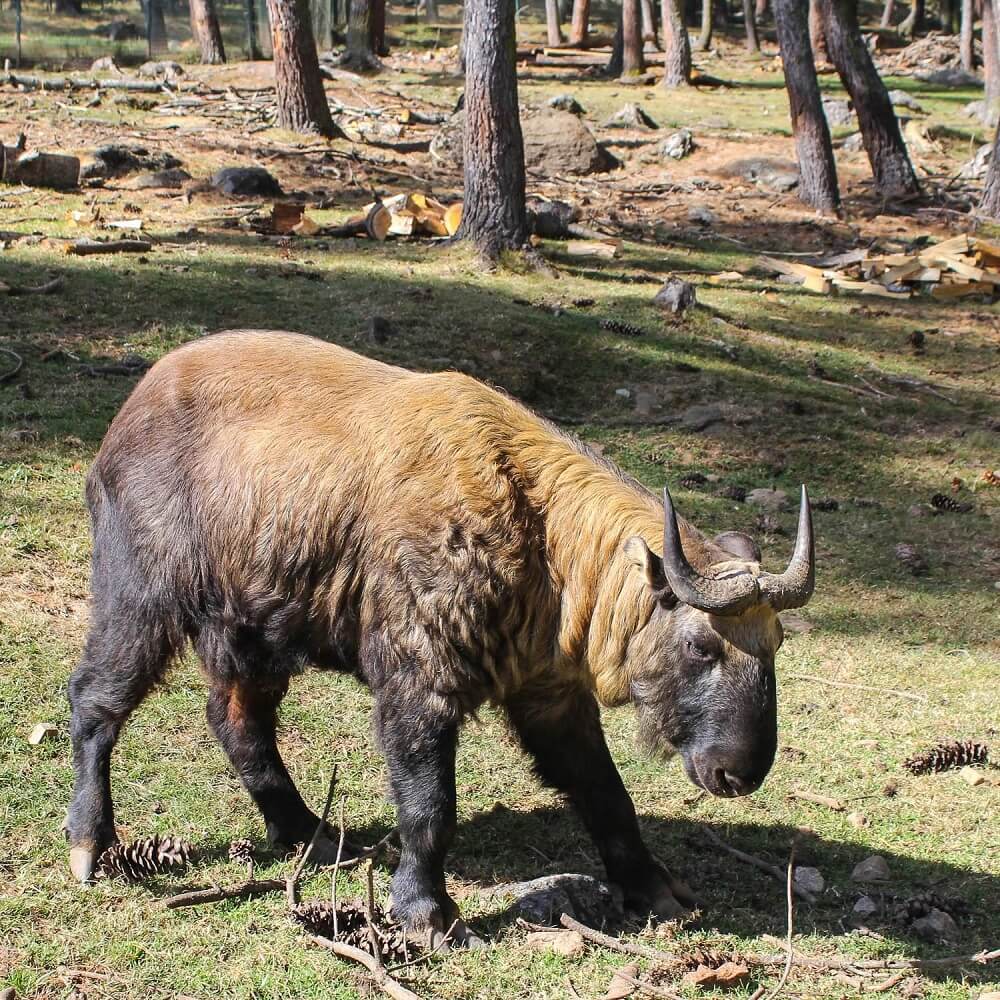
Takins are considered the obscure animals on the planet with their unique physical appearance. The Takin features the combined appearances of goats, sheep, and other similar species, and is also the largest and stockiest member of the Caprinae subfamily.
Their small legs are supported by massive, two-toed hooves with well-developed fur. It has a bulky build and a deep chest.
Its huge head is distinguished by its tall, arched nose and sturdy, ridged horns. These horns are found in both sexes and run parallel to the head before twisting upwards to a sharp point.
The national animal of Bhutan, the Takin is approximately 30 cm (12 in) long but can grow up to 64 cm (25 in). It has a long, shaggy coat with a dark stripe down the back, and males (bulls) have dark features.
The First Man to Document the National Animal of Bhutan
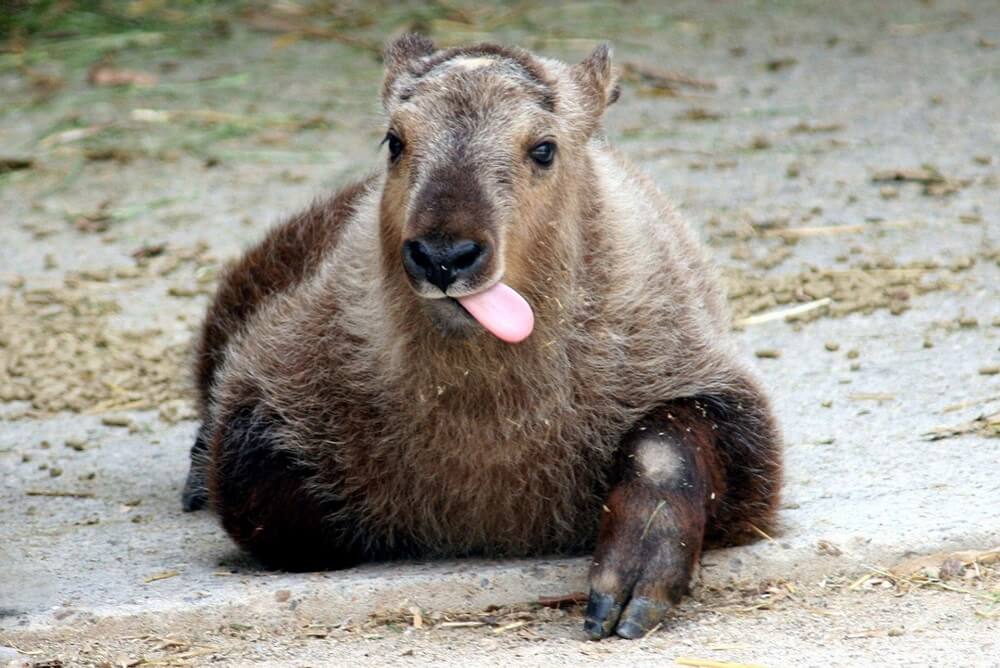
A British official, John Claude White (1853-1918), photographed a baby Takin in its native habitat in Bhutan in 1905. Thus, he became the first European to gather photographic evidence of the national animal of Bhutan.
Until then, the Takin was considered a mythological animal, similar to the 8th-century Greek mythological animal, the gold-haired winged ram.
It is of considerable interest because it is the first photograph of this strange ruminant, the only one ever seen alive by Europeans.
The scientific name Brudocas Taxicolor was named after Mr. White since he was the first to notice the animal.
How Did Takin Become Known to the Rest of the World?
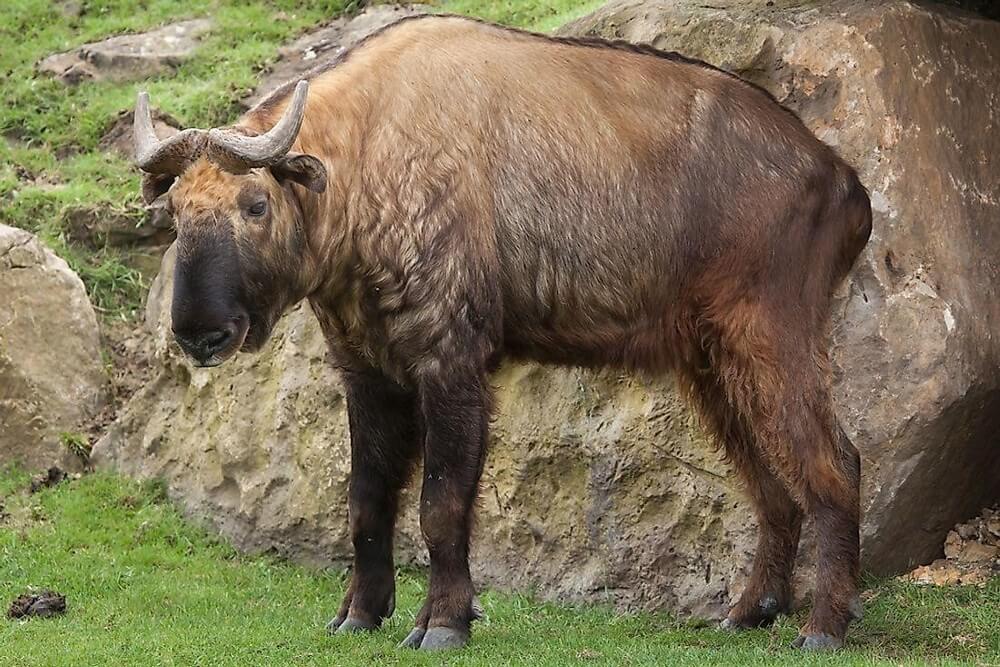
Two years later, in 1907-1908, JC White came to Bhutan to attend the coronation of Bhutan’s first king. Mr. White entered Bhutan this time via the Tremola pass near Paro and exited via Jaigaon.
During this voyage, he was able to send specimens as well as a living Takin to London.
While in Punakha, he obtained five specimens of the Takin and took them to England, where he raised them in the Zoological Gardens at London. That is when the Takin was named Burdocas Taxicolor in the zoological garden in Mr. White’s honor.
During his second visit, he also managed to get a baby Takin from Gasa and send it to the London Zoo. The zoological garden record confirms that the baby Takin arrived on 22nd June 1909 and died on 7th May 1918.
Gradually this obscure national animal of Bhutan became known to the rest of the world.
Tour packages customized by Norbu Bhutan often include a trip to the Takin Reserve in the capital.
What are the Subspecies of Takin?
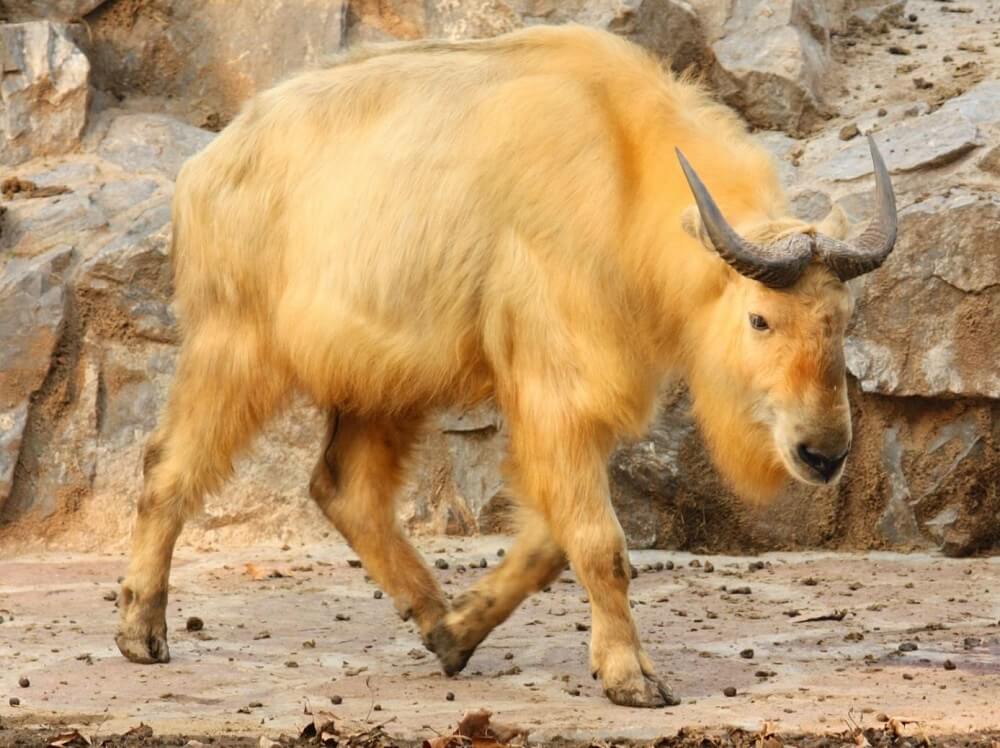
There are four subspecies of Takin: Golden Takin, Mishmi Takin, Sichuan Takin, and Bhutan Takin, with their coat color.
Male Takins have a different coat color than female Takins, which have light-colored faces, making it easier to tell them apart.
In the eastern Himalayas, their general coloration ranges from dark blackish to reddish-brown tinged with grayish-yellow to lighter yellow-gray in Sichuan Province to predominantly golden or creamy-white with less black hairs in Shaanxi Province.
Ecology and Behavior of the National Animal of Bhutan
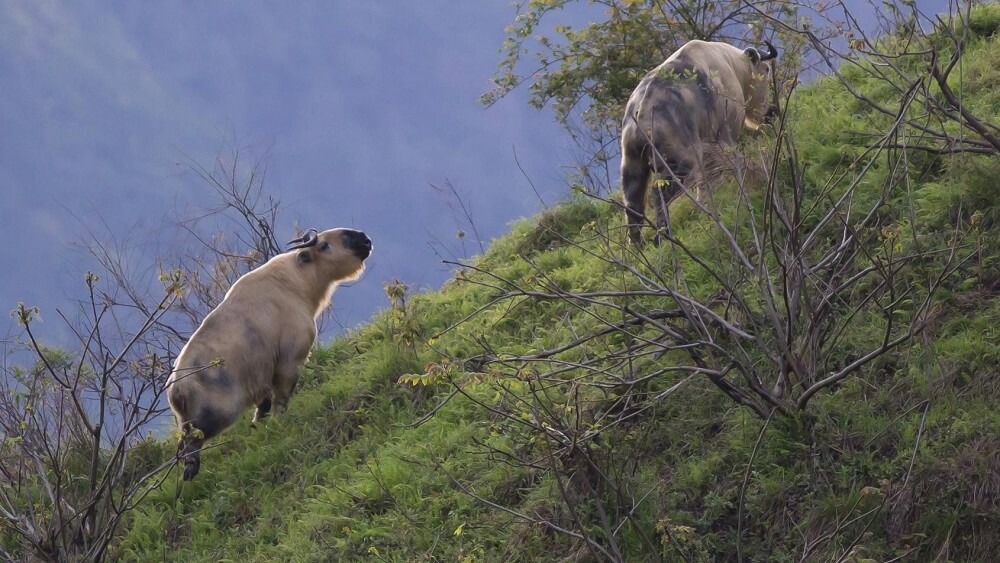
Takins live a simple life in small family groups of about 20 members in the Northeastern part of Bhutan. Older males often choose a solitary life wandering away from the group.
Migration: Herds of up to 300 individuals congregate on the mountain slopes in summer. Groups appear to occur in the greatest numbers near ideal feeding grounds, salt licks, or hot springs. In winter, Takin travels from the top grassland to lower, more forested areas, preferring sunny locations before sunrise.
Reproduction: Adult males compete for dominance by sparring with opponents head-to-head for mating in July and August. Both sexes use the fragrance of their urine to signify supremacy. After around eight months of gestation, a single young is born.
Feeding Habit: As a herbivorous animal species, Takin spends most of their days grazing in meadows and forests. They feed on leaves and grasses, bamboo shoots, and flowers in the early morning and late afternoon. Salt is also a significant part of their diets, and groups will spend several days at a mineral deposit.
Defense Mechanism: They use their sharp, twisted horns to fight off the smaller prey, but when larger canines prey on them, individuals make a cough alarm call, and the herd retreats into deep bamboo thickets and takes cover.
How Rare is the National Animal of Bhutan?
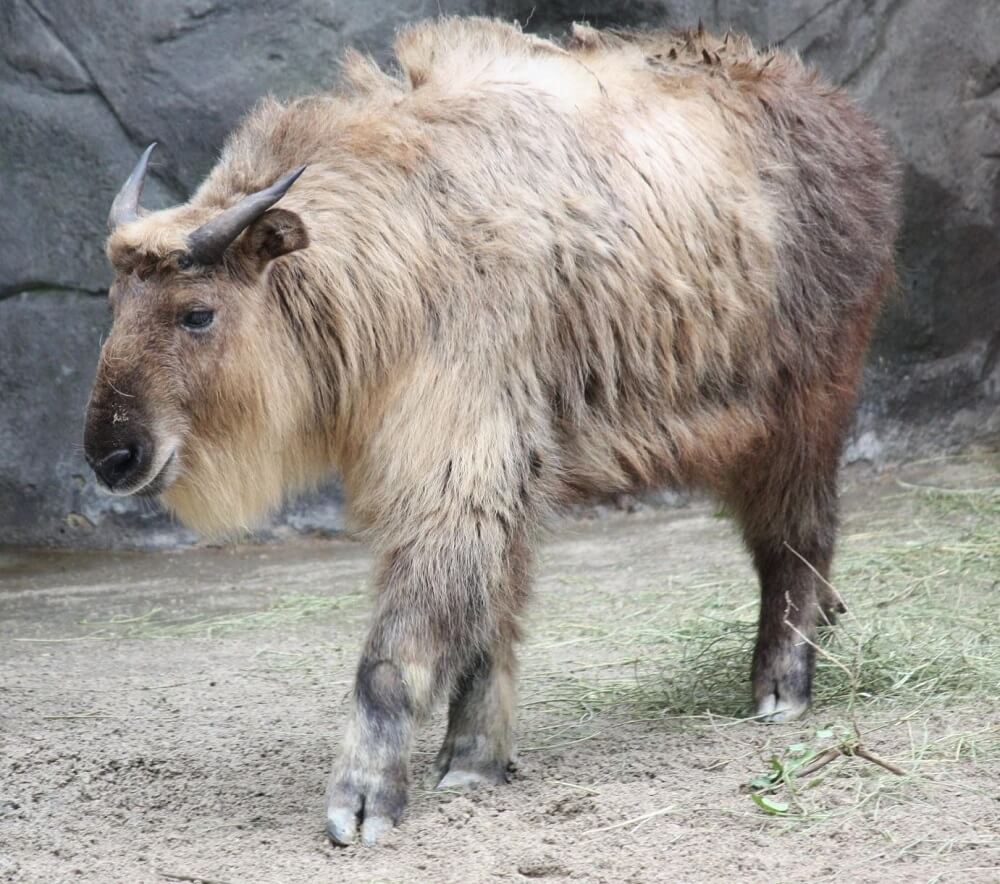
The IUCN Red List classifies the Takin as an endangered and vulnerable species. Overhunting, habitat fragmentation, and deforestation is the main cause of the declining numbers of the national animal of Bhutan.
Takin horns have appeared in the illicit wildlife trade in Myanmar, and 89 sets of horns were sighted publicly for sale during three surveys conducted from 1999 to 2006 in the Tachilek market.
Where Can You Spot the National Animal of Bhutan?
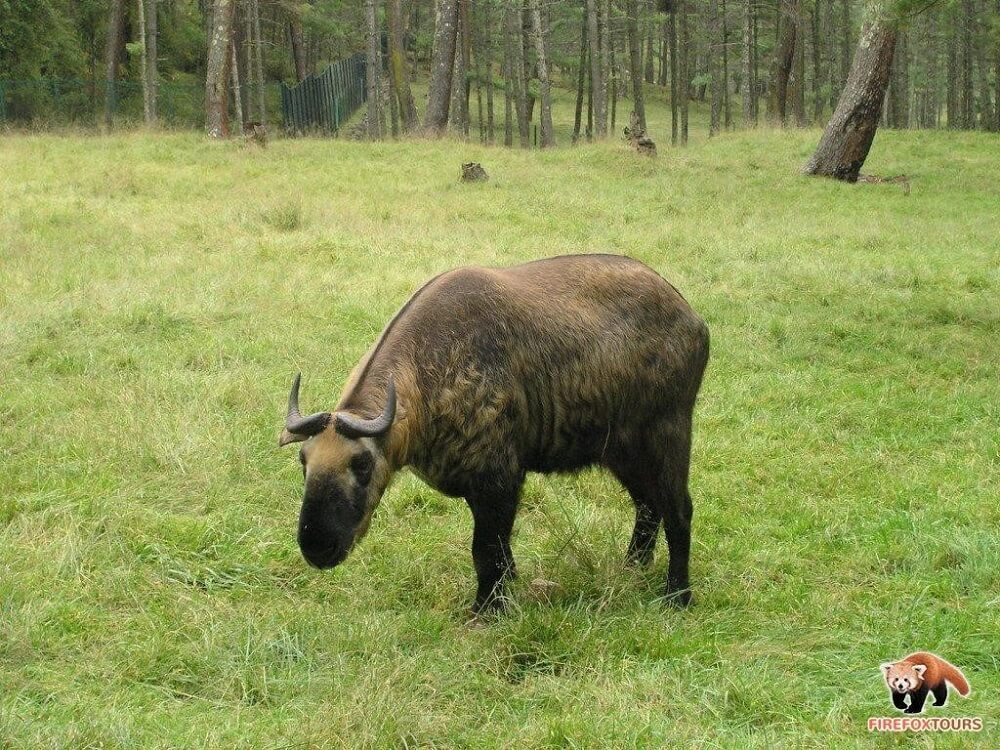
Although seeing wild Takin in the northeastern part of Bhutan is rare, you can see them at Motithang/Royal Takin Preserve in Thimphu.
There is a fascinating back story about the Motithang Takin Preserve. Initially, some Takins were kept in zoo cages in Thimpu, but the king decided it was unethical to confine animals in a Buddhist country and ordered their release.
However, the animals remained in the surrounding area and wandered the streets of Thimphu for food. The authorities, therefore, had to confine them to the fenced woodland habitat of Mothithang Takin Preserve.
Interested in some more Bhutanese specialties? Read a blog on why archery is the national sport of Bhutan. Archery in Bhutan is nothing like the modern competitive archery. It’s unique, hard to hit the target, and purely traditional!
Final Thoughts
Everything in Bhutan is distinctive and obscure, and the Takin, the national animal of Bhutan, adds elegance to the country’s distinct personality.
The national animal of Bhutan is endemic to the Himalayas, and Bhutan is one of the lucky countries to have a species of such ecological and religious significance.
It’s your best chance to see this particular animal in your life. Contact Norbu Bhutan to plan a vacation and experience the uniqueness of Bhutan today!
